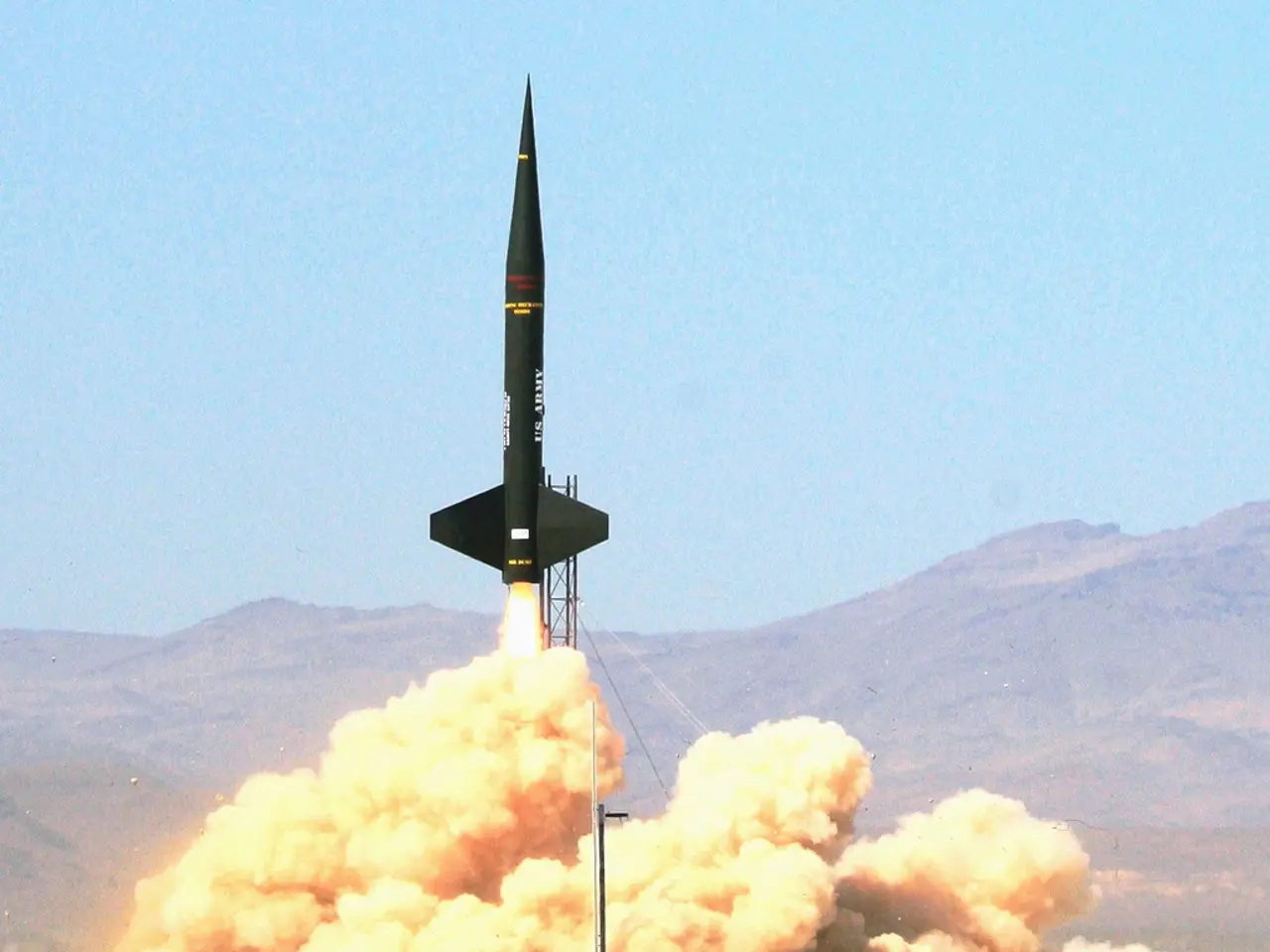Intense loss of lives in Gaza as Palestinians rush for assistance, delivered both from air and ground operations
In the conflict-ridden Gaza Strip, a new UN route runs near two sites operated by the Gaza Humanitarian Foundation (GHF), attracting large crowds in search of much-needed aid. However, the delivery of aid to Gaza remains a complex issue, with airdrops being viewed as ineffective and risky.
Airdrops, often considered the least effective way to distribute humanitarian aid in conflict zones, have been criticised for their high risk of civilian casualties. Large crates dropped by parachute have unfortunately led to the deaths of displaced Palestinians due to inaccurate drops or parachute failures. For instance, one such incident resulted in the death of five Palestinians.
Moreover, the delivery of aid through airdrops is fraught with logistical challenges. It is inherently difficult to aim aid pallets safely in a conflict zone, and they can land in dangerous areas or cause injuries during impact. Additionally, airdrops provide only a small quantity of aid and cannot replace the massive volume of supplies needed, especially during intense humanitarian crises like in Gaza. They are costly and inefficient compared to ground deliveries, which are widely recognised as the most effective.
Further concerns surround the use of airdrops as political leverage. Some experts argue that airdrops sometimes serve more as symbolic gestures for public opinion rather than genuine solutions. There are also concerns that the Israeli government restricts effective aid access, turning aid into a tool of pressure against Gazans.
Despite these challenges, airdrops might provide some immediate relief. However, they come with significant safety hazards, logistical inefficiencies, and do not address the scale of humanitarian needs in Gaza. The international consensus among aid agencies and experts is that opening land crossings for ground delivery remains essential to provide sustained and effective humanitarian assistance.
Meanwhile, the situation on the ground remains dire. Over the past few months, several hundred Palestinians have been killed by Israeli fire while attempting to access food distribution sites and aid convoys. The military disputes the toll of casualties caused by its fire, but the UN and other independent experts view the figures from Gaza's Health Ministry as the most reliable.
In an effort to manage the crowds, GHF contractors have resorted to using pepper spray or warning shots to prevent deadly crowding since opening four sites in May. However, incidents of Israeli forces reportedly firing towards crowds near GHF sites have been reported, leading to further casualties.
The international community continues to call for increased aid access and the implementation of safer, more effective delivery methods in Gaza. As the situation in Gaza remains precarious, the need for sustained humanitarian assistance is more pressing than ever.
References:
[1] "Aid agencies fear for Gaza as Israel blocks aid" BBC News, 10 July 2020, https://www.bbc.com/news/world-middle-east-53271013
[2] "Aid groups call for Gaza ceasefire as death toll rises" Al Jazeera, 15 May 2021, https://www.aljazeera.com/news/2021/5/15/aid-groups-call-for-gaza-ceasefire-as-death-toll-rises
[3] "Aid agencies warn of 'catastrophe' in Gaza" Deutsche Welle, 12 May 2021, https://www.dw.com/en/aid-agencies-warn-of-catastrophe-in-gaza/a-57841885
[4] "Gaza aid: Israel eases restrictions but critics say it's not enough" BBC News, 16 May 2021, https://www.bbc.com/news/world-middle-east-57030663
[5] "Gaza aid crisis: 'We're just trying to survive'" Al Jazeera, 11 May 2021, https://www.aljazeera.com/news/2021/5/11/gaza-aid-crisis-were-just-trying-to-survive
- Despite the complexities and concerns surrounding aid delivery in Gaza, some unconventional methods like airdrops are still being proposed, but they are viewed as ineffective, risky, and potentially dangerous.
- In the past, accidents during airdrops have led to the tragic deaths of civilians due to inaccurate drops or parachute failures, such as the incident that claimed the lives of five Palestinians.
- Apart from the safety hazards, airdrops also face logistical challenges, as it is difficult to aim aid pallets safely in a conflict zone, and they can land in dangerous areas or cause injuries.
- Beyond the logistical issues, some experts question whether airdrops are used more for political show than as genuine solutions, with concerns that they may be restricted by certain governments like Israel to exert pressure on civilians.







